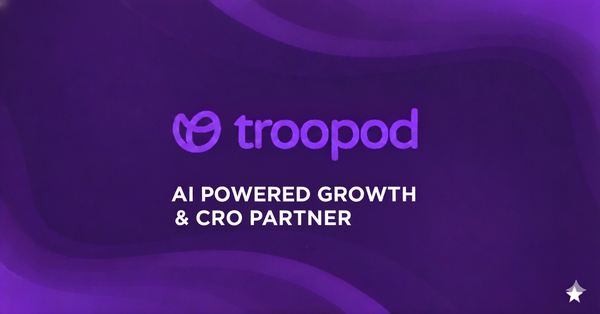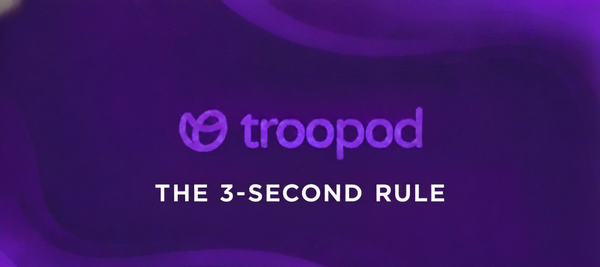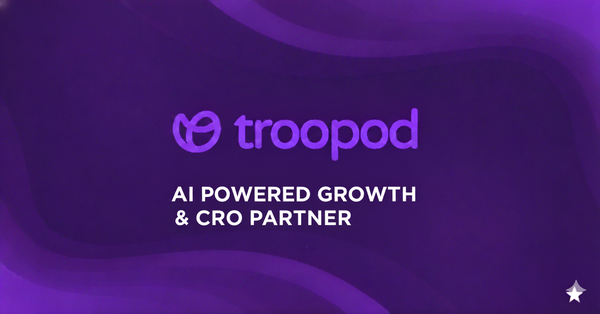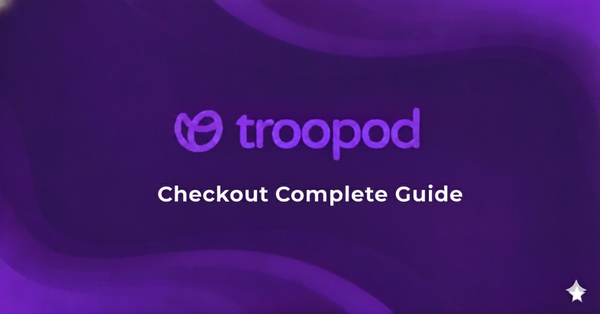Your Mobile Conversion Rate Is Terrible (And It's Costing You ₹2 Crores Annually)
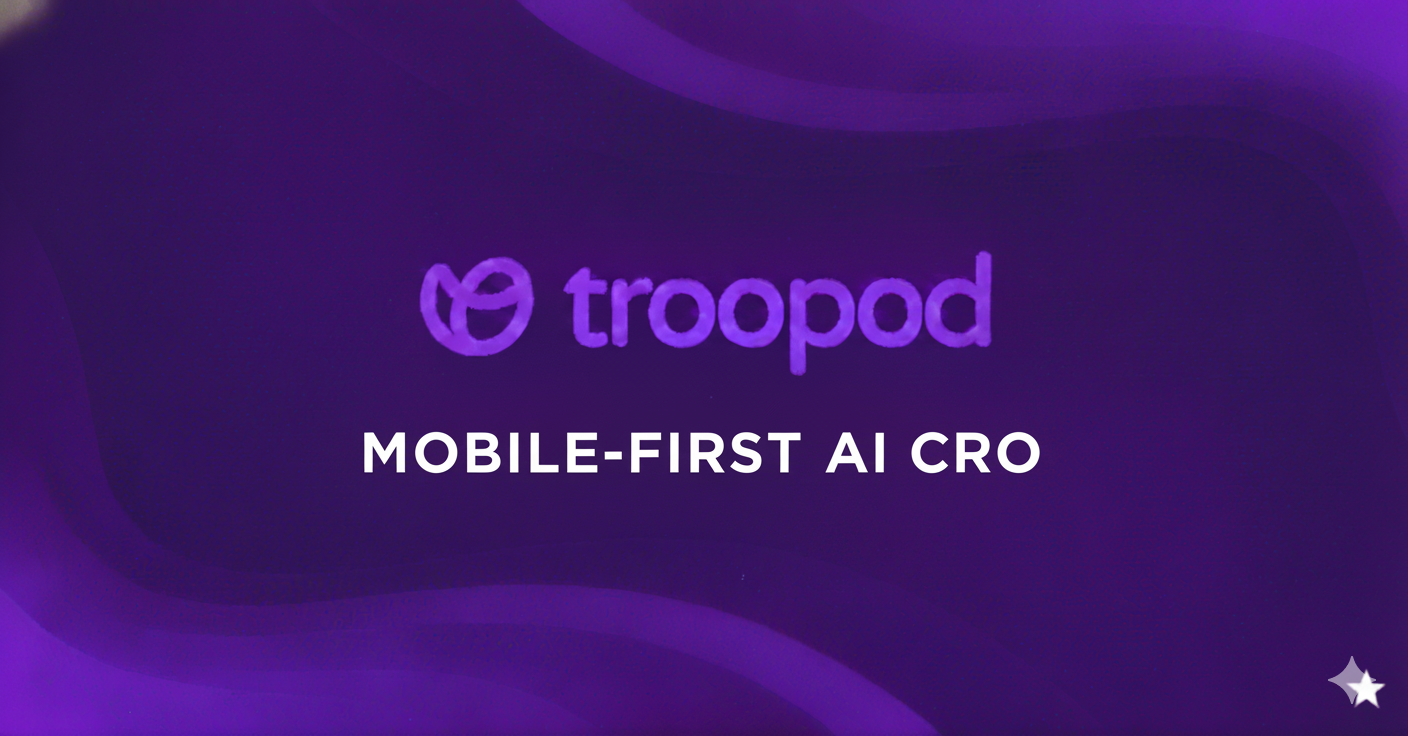
Here's a stat that should terrify every e-commerce founder: 65-70% of your traffic comes from mobile devices, but mobile converts at less than half the rate of desktop.
Let me put that in perspective with real numbers from an actual D2C brand we analyzed last month:
Desktop Traffic: 15,000 monthly visitors | Conversion Rate: 4.2% | 630 conversions Mobile Traffic: 35,000 monthly visitors | Conversion Rate: 1.8% | 630 conversions
Same number of conversions. But mobile had 2.3x more traffic.
If mobile converted at the same rate as desktop? That brand would get 1,470 mobile conversions instead of 630. That's 840 additional sales every month. At ₹2,500 average order value, that's ₹21 lakhs extra monthly revenue. ₹2.52 crores annually.
From traffic they're already paying for.
And here's the gut-punch: most brands have no idea this is happening. They look at overall conversion rate (3.1% in this case) and think "pretty good!" without realizing mobile is catastrophically underperforming.
Sound familiar? Let me guess: you've "optimized for mobile" by making your site responsive, tested it on your iPhone, and called it done.
Meanwhile, 70% of your mobile visitors are bouncing within 8 seconds, frustrated by an experience that technically "works" but psychologically fails at every stage.
The Mobile Conversion Gap Nobody Talks About
Pop quiz: What's your mobile conversion rate compared to desktop?
If you don't know the answer, you have a problem. If you do know, and mobile is less than 70% of desktop, you have an even bigger problem.
Here's what we see across hundreds of Indian e-commerce brands:
Tier 1: The Disasters (45% of brands)
- Desktop conversion: 3.5-5%
- Mobile conversion: 1.2-2%
- Mobile converts at 30-50% of desktop rate
- Lost annual revenue: ₹1.5-3 crores (for mid-sized brands)
Tier 2: The Mediocre Majority (40% of brands)
- Desktop conversion: 3-4%
- Mobile conversion: 2-2.8%
- Mobile converts at 60-70% of desktop rate
- Lost annual revenue: ₹80 lakhs-1.5 crores
Tier 3: The Winners (15% of brands)
- Desktop conversion: 3.5-4.5%
- Mobile conversion: 3.2-4%
- Mobile converts at 85-95% of desktop rate
- Capturing most of their revenue potential
The winners aren't just "mobile-friendly." They're using AI to personalize mobile experiences based on device-specific behaviors, constraints, and psychology.
Why Your "Mobile-Optimized" Site Still Sucks
Your developer tells you the site is mobile responsive. Your designer says it looks great on mobile. You tested it yourself and could complete a purchase.
But here's what's actually happening when real customers use your mobile site:
Problem 1: You Designed for Desktop, Then Squeezed for Mobile
Most brands start with desktop design, then "make it work" on mobile. This is backwards.
What You Think Happened: Desktop design → Responsive CSS → Looks good on mobile ✓
What Actually Happened:
- Navigation that made sense on desktop is now a hamburger menu with 15 options
- Product pages with side-by-side images now require endless scrolling
- "Quick view" functionality doesn't work on touch screens
- Hover effects don't exist on mobile (no hover state on fingers)
- Form fields designed for keyboard now torture mobile users
The Result: Mobile users spend 3x more time trying to find things, get frustrated 5x faster, and bounce 2x more frequently.
Problem 2: You Test on WiFi with New iPhones
Here's what you test on:
- Latest iPhone or flagship Android
- Office WiFi or home broadband
- Full battery
- Unlimited data plan
- Not distracted
Here's what your actual mobile customers use:
- 2-3 year old budget Android phones (70% of Indian market)
- 3G/4G with spotty connectivity
- 20% battery, worried about drain
- Limited data plans
- While commuting, watching TV, in meetings
Your "smooth" mobile experience loads in 1.2 seconds on your device. On your customer's phone? 8-12 seconds. By second 3, they're gone.
Problem 3: You Think Small Screen = Same Experience, Smaller
Wrong. Mobile users aren't "desktop users with smaller screens." They're a completely different species with different:
Intent Patterns:
- Desktop: Research mode, comparing options, reading descriptions
- Mobile: Quick decision mode, need instant answers, scanning not reading
Patience Levels:
- Desktop: Will wait 4-5 seconds for load
- Mobile: Bounce after 2-3 seconds
Context:
- Desktop: Focused attention, dedicated shopping session
- Mobile: Multitasking, distractions, shorter sessions
Purchase Triggers:
- Desktop: Detailed info, specifications, reviews
- Mobile: Social proof, urgency, simplicity
One-size-fits-all content doesn't work. Desktop content crammed onto mobile doesn't work. You need mobile-first psychology, not just mobile-first design.
Problem 4: Your Checkout is a Mobile Nightmare
Let's walk through your mobile checkout experience:
Step 1: Cart Page
- Tiny "X" buttons to remove items (miss it 3 times)
- Quantity selector requires precision tapping
- Promo code field buried below fold
- Total price not visible without scrolling
Step 2: Address Entry
- 12 separate form fields
- Autocomplete doesn't work properly
- Pin code field requires number keyboard switch
- Google Maps integration opens and freezes
- Keyboard covers submit button
Step 3: Shipping Selection
- Radio buttons too small to tap accurately
- Shipping options require scrolling to compare
- Delivery date not prominent
- Express shipping cost appears surprisingly
Step 4: Payment
- Redirects to payment gateway (looks sketchy)
- OTP requires switching apps
- Payment fails, no clear explanation
- Try again button doesn't work
- Customer gives up, shops on Amazon
Sound like a smooth experience? Yet 80% of brands force mobile users through this torture.
The Seven Deadly Sins of Mobile Conversion Killing
Sin 1: Page Speed Purgatory
The Crime: Your mobile site loads in 6+ seconds
The Cost: For every 1 second delay:
- 7% reduction in conversions
- 11% fewer page views
- 16% decrease in customer satisfaction
6-second load time vs. 2-second load time = 42% fewer conversions
The Fix (AI-Powered):
- AI-optimized image loading (right size for device)
- Predictive prefetching (loads what user will click next)
- Edge caching for returning visitors
- Progressive loading (show product before all images load)
Sin 2: Tiny Tap Targets That Test Patience
The Crime: Buttons, links, and form fields under 48x48 pixels
The Cost: Every mistap:
- Triggers frustration
- Breaks flow state
- Increases bounce probability
- Trains users that your site is annoying
The Fix (AI-Powered):
- Dynamic UI scaling based on user's tap accuracy
- Automatically spaces tap targets based on user behavior
- Predictive interface expansion (makes likely next tap larger)
Sin 3: Desktop Content Overload
The Crime: Showing mobile users every detail from desktop
The Cost:
- 3-5x more scrolling required
- Key information buried
- Decision fatigue from too much info
- Abandoned product pages
The Fix (AI-Powered):
- AI determines what this user needs to see based on:
- Device type and screen size
- Previous behavior (researcher vs quick buyer)
- Stage in purchase journey
- Time of day and context signals
- Dynamically prioritizes content
- Hides unnecessary details unless requested
- Surfaces decision-making info prominently
Sin 4: Form Field Hell
The Crime: Asking mobile users to fill 15+ fields
The Cost: Each additional form field reduces conversion by 2-3%
The Math:
- 15 fields = 30-45% conversion loss
- 5 fields = 10-15% conversion loss
- Difference = 22-35% more conversions with simplified forms
The Fix (AI-Powered):
- AI pre-fills from previous sessions
- Smart field reduction (asks only what's necessary)
- Address intelligence (completes from pin code)
- One-tap checkout for returning customers
- Biometric authentication (Face ID, fingerprint)
Sin 5: Payment Friction Fiasco
The Crime: Complicated payment flows designed for desktop
The Cost:
- 25-35% of mobile users abandon at payment stage
- Card details entry on mobile = torture
- Payment redirects = trust loss
- Failed payments = permanent abandonment
The Fix (AI-Powered):
- AI detects preferred payment method from behavior
- Prioritizes mobile-friendly options (UPI, wallets)
- One-click payments for returning customers
- Dynamic payment method ordering per user
- Smart retry logic for failed payments
Sin 6: Navigation Nightmare
The Crime: Desktop navigation crammed into hamburger menu
The Cost:
- Users can't find what they want
- Bounce after 2-3 failed searches
- Browse less, buy less
- Frustrated customers → competitors
The Fix (AI-Powered):
- AI-personalized navigation (shows what this user wants)
- Predictive search (autocomplete after 2 characters)
- Visual product discovery (image-first browsing)
- Recently viewed quick access
- Smart category ordering per user
Sin 7: Zero Mobile-Specific Optimization
The Crime: Treating mobile as "small desktop"
The Cost: Missing 30-50% of potential mobile conversions
The Reality: Mobile users need:
- Different product information hierarchy
- Different trust signals (call buttons, not chat)
- Different urgency triggers
- Different checkout flow
- Different personalization
The Fix: Everything we're about to discuss.
See how AI could 3x your mobile conversion rate →
How AI Solves the Mobile Conversion Crisis
Here's the fundamental truth: you can't manually optimize for mobile anymore.
Why? Because "mobile" isn't one thing. It's:
- 50+ device types with different screen sizes
- 10+ operating system versions with different behaviors
- Hundreds of browser/app combinations
- Thousands of connectivity scenarios
- Millions of user context variations
You can't A/B test your way through that complexity. You need intelligence that adapts in real-time to each specific combination.
How AI Personalization Works on Mobile
Step 1: Device Intelligence (Milliseconds 0-50)
The moment a mobile user lands, AI detects:
- Exact device model and screen size
- Operating system and version
- Browser/app being used
- Connection speed (3G, 4G, 5G, WiFi)
- Battery level signals (aggressive data usage or conservative?)
- Time of day and likely context (commuting? lunch break? evening?)
Step 2: Behavior Analysis (Milliseconds 50-500)
AI analyzes how this specific user interacts with mobile:
- Tap accuracy (do they frequently miss buttons?)
- Scroll patterns (fast scanner or careful reader?)
- Zoom behavior (struggling to read text?)
- Form interaction (fighting autocorrect?)
- Patience levels (quick bouncer or persistent?)
Step 3: Dynamic Optimization (Milliseconds 500-1000)
Based on device + behavior, AI optimizes:
Content Prioritization:
- Researchers see detailed specs first
- Quick buyers see "Buy Now" prominently
- Price-sensitive users see value props
- Trust-seekers see reviews and social proof
Layout Adaptation:
- Small screens get streamlined single-column
- Large phones get optimized two-column
- Button sizes scale to user's tap accuracy
- Spacing adjusts to prevent mistaps
Load Optimization:
- Slow connections get compressed images
- Fast connections get high-quality media
- Predictive prefetching for likely next action
- Progressive loading (show product first, enhance after)
Checkout Simplification:
- Returning users get one-tap checkout
- New users get absolute minimal fields
- Payment methods ordered by user preference
- Address auto-complete from pin code
Step 4: Continuous Learning (Ongoing)
Unlike static "mobile optimization," AI learns:
- Which content hierarchy works for which users
- Which button sizes match user accuracy
- Which payment methods each segment prefers
- Which interventions prevent mobile abandonment
- Which simplifications work vs. oversimplify
The experience gets better for every user, every session.
Real Results: Mobile Conversion Transformation
Case Study 1: Fashion E-Commerce Brand
Before AI Mobile Optimization:
- Mobile traffic: 42,000 monthly visitors (68% of total traffic)
- Mobile conversion: 1.6%
- Mobile conversions: 672
- Desktop conversion: 3.8%
- Monthly mobile revenue: ₹20.16 lakhs
After AI Implementation:
- Mobile traffic: 42,000 (same)
- Mobile conversion: 3.2% (100% improvement)
- Mobile conversions: 1,344
- Additional conversions: 672
- Additional monthly revenue: ₹20.16 lakhs
- Additional annual revenue: ₹2.42 crores
Key AI Changes:
- Device-specific image optimization (40% faster load)
- Dynamic content prioritization per user
- One-tap checkout for returning customers
- Mobile-first product page layouts
- AI-powered size recommendation
Case Study 2: Electronics Retailer
The Challenge: Complex products requiring detailed specs, but mobile users bouncing from information overload.
The AI Solution:
- Detected "researcher" vs "ready-to-buy" mobile behavior
- Researchers: Expandable spec sections, comparison tools
- Buyers: Simplified view, prominent CTA, one-click purchase
- Both groups got exactly what they needed
Results:
- Mobile bounce rate: 72% → 48%
- Mobile session duration: +180%
- Mobile conversion: 1.4% → 2.9%
- ₹3.8 crores additional annual mobile revenue
Case Study 3: Home Decor Store
The Challenge: Beautiful products that needed to be seen in detail, but high-res images killed mobile load times.
The AI Solution:
- Smart image optimization (device-specific quality)
- Progressive loading (show product fast, load detail after)
- AI determined which users needed high-res (researchers) vs quick-load (browsers)
- Predictive image preloading for likely next product
Results:
- Mobile page load: 7.2s → 2.1s
- Mobile bounce rate: 68% → 38%
- Mobile conversion: 2.1% → 3.7%
- ₹1.9 crores additional annual mobile revenue
The Mobile-First Personalization Framework
Ready to stop losing mobile revenue? Here's your playbook:
Level 1: Mobile Fundamentals (Do This First)
Speed:
- Target: Under 2 seconds load time
- Compress images aggressively
- Minimize JavaScript
- Enable browser caching
- Use CDN for static assets
Tap Targets:
- Minimum 48x48 pixels for all tappable elements
- 8px spacing between tap targets
- Large, obvious buttons for primary actions
- Avoid accidental taps through smart spacing
Form Simplification:
- Maximum 5 fields for checkout
- Auto-complete for address
- Appropriate keyboard types (number pad for phone)
- Clear error messages
- No typing if possible
Checkout Flow:
- Single page checkout for mobile
- Guest checkout default
- Progress indicator
- Save for later option
- Multiple payment methods prominent
Level 2: Mobile-Specific UX (Next Priority)
Content Strategy:
- Mobile-first writing (shorter, scannable)
- Front-load key information
- Collapsible sections for details
- Visual hierarchy optimized for scrolling
- Clear, large headlines
Navigation:
- Simplified menu structure
- Search prominent
- Recently viewed items
- Quick add to cart from listings
- Sticky navigation bar
Product Pages:
- Image as hero (above fold)
- Swipeable image gallery
- Key info visible without scrolling
- Simplified reviews (star rating + top reviews)
- Prominent CTA button
Trust Signals:
- Mobile-specific trust badges
- Tap-to-call customer service
- WhatsApp support button
- Easy return policy access
- Real-time delivery estimates
Level 3: AI-Powered Personalization (Maximum Impact)
Device-Aware Content:
- AI serves device-appropriate content
- Optimization for specific screen sizes
- Battery-conscious loading strategies
- Connection-speed adaptations
Behavior-Based Optimization:
- Fast browsing detected → Quick-scan layouts
- Detailed researcher → Full information available
- Struggling with forms → Simplified fields
- Payment hesitation → Alternative methods surface
Predictive Intelligence:
- Preload likely next page
- Prepare likely-to-purchase items
- Anticipate abandonment and intervene
- Personalize based on mobile context (time, location, behavior)
Continuous Improvement:
- A/B test mobile experiences automatically
- Learn from every mobile session
- Optimize button placement per user
- Refine checkout flow continuously
The Mobile Personalization Stack
To compete in 2025, you need:
Foundation Layer:
- Fast, mobile-responsive website
- Optimized images and assets
- Clean, minimal code
- Reliable hosting
Intelligence Layer:
- AI personalization platform
- Real-time behavior tracking
- Device detection and adaptation
- Predictive optimization
Engagement Layer:
- Progressive web app capabilities
- Push notifications (permission-based)
- One-tap checkout
- Saved preferences
Analytics Layer:
- Mobile-specific conversion tracking
- Device segmentation
- Behavior flow analysis
- A/B test automation
Your Mobile Conversion Audit: The Questions That Matter
Answer these honestly:
Speed Check: □ Does your mobile site load in under 2 seconds on 4G? □ Can users see products without waiting for images? □ Does your site work on 3G (yes, people still use it)?
Usability Check: □ Can someone with large fingers tap your buttons accurately? □ Are form fields large enough to tap without zooming? □ Does keyboard cover your submit button? □ Can users complete checkout without frustration?
Content Check: □ Is key information visible without scrolling? □ Can users find what they want in under 10 seconds? □ Is your mobile navigation actually useful? □ Do product pages answer mobile user questions?
Conversion Check: □ Is your mobile conversion rate above 70% of desktop? □ Do you offer mobile-specific payment options? □ Can returning customers checkout in one tap? □ Do you intervene before mobile abandonment?
If you answered "no" to more than 3 questions, you're losing serious mobile revenue.
Get a free mobile conversion audit and see your specific opportunities →
The Mobile-First Future is Already Here
Here's what the winners are doing right now:
They've stopped treating mobile as secondary. Mobile isn't the future—it's the present. 70% present.
They've embraced AI personalization. Manual optimization can't handle mobile complexity. AI can.
They're thinking mobile-first, not mobile-also. Desktop experience is adapted from mobile, not vice versa.
They're measuring mobile separately. Mobile isn't "overall conversion rate divided by device." It's a distinct channel with distinct metrics.
They're investing in mobile. Not just design, but technology, intelligence, and continuous optimization.
The question isn't whether mobile matters. The question is: are you winning mobile or losing it?
Stop Losing Mobile Revenue
Every mobile visitor who bounces in frustration is money walking out the door. Every mobile cart abandoned due to checkout friction is revenue you'll never see. Every mobile conversion that could have happened but didn't is your competitor's win.
You're not "doing okay" with 1.8% mobile conversion when 3.5% is possible. You're leaving ₹2+ crores on the table annually.
The good news? Your traffic is already there. Your customers want to buy. The only thing standing between you and dramatically better mobile revenue is an experience that actually works for how people use mobile devices.
See exactly where your mobile experience is failing, how much it's costing you, and what AI-powered optimization could do for your bottom line.
Book Your Free Mobile Conversion Analysis →
We'll analyze your mobile experience across devices, identify specific friction points, and show you exactly what's possible with AI personalization.
No generic recommendations. No one-size-fits-all solutions. Just your mobile reality and your mobile potential.
Your mobile customers are ready to buy. Let's make sure they can.
About Troopod: We help D2C brands and e-commerce businesses transform website visitors into customers through AI-powered real-time personalization. Our platform delivers measurable conversion improvements while respecting customer privacy and requiring minimal technical overhead.
Ready to 2x your mobile conversions? Get your free analysis →


